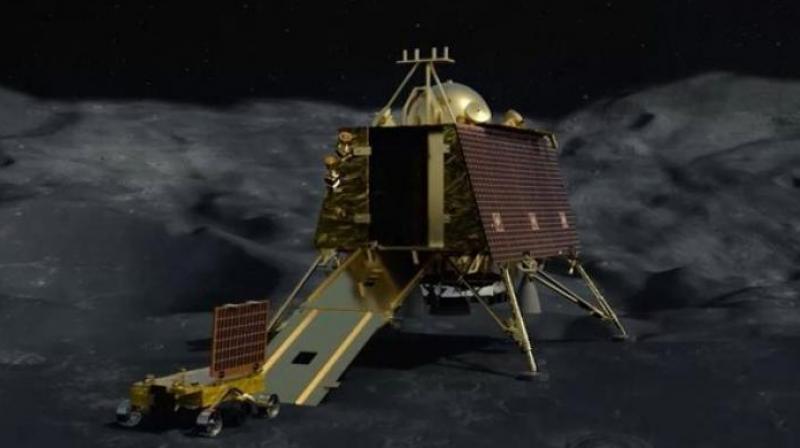Chandrayaan-2 finds Moon ionosphere density varying

NELLORE: Moon is said to have a very tenuous atmosphere. Since ionosphere derives its origin from the atmosphere, plasma density of the Moon is believed to be only a few hundred ions per cubic centimetre.
However, measurements made using Dual Frequency Radio Science (DFRS) experiment onboard Chandrayaan-2 orbiter have shown that Moon’s ionosphere has a plasma density of 104 cm-3 in the wake region, which is at least one order of magnitude more than that present on the day side.
Chandrayaan-2, the second Indian Lunar exploration mission launched by Indian Space Research Organisation (Isro) on July 22, 2019, carried several payloads, among which DFRS is to study the lunar ionosphere. DFRS uses two coherent signals in S-band (2240 MHz) and X-band (8496 MHz) of radio frequencies.
These are transmitted from Chandrayaan-2 orbiter and received by the ground station at Byalalu, Bengaluru, to explore lunar plasma ambiance using the radio occultation (RO) technique.
Simultaneous measurements by two coherent radio signals helps mitigate the effect of Earth’s atmosphere and any uncertainties due to various sources during the experiments.
DFRS payload was conceptualised and jointly developed by Space Physics Laboratory (SPL) of Vikram Sarabhai Space Centre, Trivandrum; UR Rao Space Centre (URSC), Bengaluru; and Isro Telemetry, Tracking, and Command Network (ISTRAC), Bengaluru. Total 12 radio occultation experiments have been conducted in campaign mode on four different occasions.

